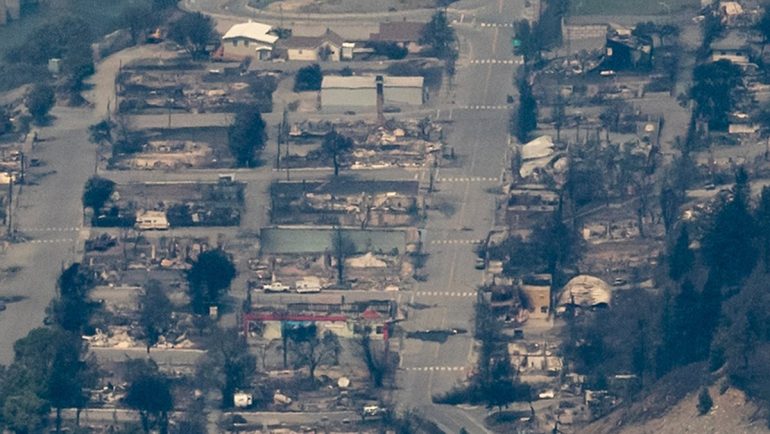Wednesday 07 July 2021
Researchers see future trends
Heat records fall from Russia to Canada
In the small Canadian town of Lytton, the 83-year-old temperature record was recently exceeded by nearly five degrees Celsius, and temperature records are falling around the world, especially in the Northern Hemisphere. The consequences for man and nature are disastrous and the end of development is hardly in sight.
Last month was by month EU-Erdbeobachtungsprogramms Copernicus Warmest June ever in North America. Temperatures have been recorded there since 1979. Parts of the United States and Canada have had a massive heat wave in the past few weeks, leading to many wildfires, but also increasing the number of heat-related deaths. “These heat waves do not occur in a vacuum. They occur in a global, warmer climate environment, which makes them more likely to occur,” said Julian Nichols, a Copernicus climate researcher.
A new record was recorded for three consecutive days in June in the Canadian province of British Columbia. According to Copernicus, temperatures in the region in June were 1.2 degrees above the 1991 to 2020 average. For Europe, it was the second warmest June since records began, and with June 2018 it was the fourth warmest worldwide. Only 2016, 2019 and 2020 saw higher average temperatures. On the other hand, in Antarctica from 1991 to 2020 was colder than average.
It was unusually hot, particularly in the western United States and Canada, as well as in Finland, Norway and western Russia. In the Finnish capital Helsinki, where records date back to 1844, the average June temperature has never been higher this year for nearly 180 years. According to the Finland Meteorological Institute, the previous recorded 33.5 °C in northern Finnish Lapland was the highest measured temperature in the region for more than 100 years. The hottest day of June was recorded in Moscow, the capital of Russia.
Heat waves are more frequent, more intense and longer
As the Norwegian Meteorological Institute announced on Twitter yesterday, Troms in northern Norway and Porsanger Municipality in the province of Finnmark measured 34.3 °C on Monday afternoon – a record for the province. So far this year, nine of Norway’s eleven provinces have also recorded heatwaves. It is defined in Norway as when the maximum temperature average is at least 28 degrees for three consecutive days.
“The heat waves we saw in North America, western Russia and northern Siberia last month are the latest examples of a trend that is likely to continue in the future and is related to the warming of our global climate,” Nichols said. Heat waves come more often, are more intense and last longer than before.
EU climate change service Generates monthly reports on air temperature, sea ice and water cycle. It is based on data from satellites, ships, aircraft and weather stations around the world as well as model calculations.

Introvert. Proud beer specialist. Coffee geek. Typical thinker. Pop culture trailblazer. Music practitioner. Explorer.





